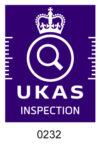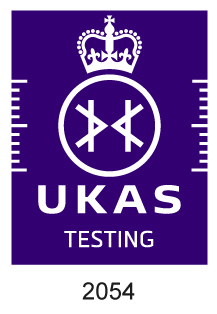Menu
close
**LATEST** New quantitative face fit services for RPE
Book in today
On Friday 11th August 2023, 39 asylum seekers who were being housed on the ‘Bibby Stockholm’ barge in Dorset were temporarily removed following the discovery of Legionella in the barge’s water systems.
AEC’s Technical Director, Bob Harris, was invited by BBC News to provide an expert overview of the management factors that could have played a role in this high-profile case.
Legionella risk is a fact of life on ships and barges, but site managers with a duty to manage water systems in buildings onshore can also take important lessons from this case, since the water systems in buildings can be remarkably similar to those on a barge.
We’ve summarised four of these lessons below:
LESSON 1 – LEGIONELLA IS AN OPPORTUNISTIC PATHOGEN
As we know, Legionella is a naturally occurring water-borne pathogen.
It’s present in the rivers that feed our reservoirs, and even if we treat that water before it reaches the water supply that businesses and homes use, extremely small numbers of the bacteria may still enter our buildings’ water systems.
In extremely small quantities, Legionella bacteria presents a low risk to human health. However, once it enters your water system, and if the conditions are right (including stagnant water, temperature between 20-45°C and a food source such as rust, organic material or biofilm) it can rapidly multiply to dangerous concentrations.
In the case of the Bibby Stockholm, we still don’t have all the information but, the timeline of the emergence of Legionella was as follows:
In short: don’t give Legionella bacteria the opportunity to thrive in your water system. The best way to do this is by following Lesson 2.
LESSON 2 – YOUR LEGIONELLA RISK ASSESSMENT MUST COME FIRST
If you are responsible for looking after your site’s water systems, starting with commissioning a Legionella risk assessment will be a key requirement of your duties. It is very important that the risk assessment is done before anything else.
The risk assessment gives you a full view of your water system, the risks inherent in it, and the exact control measures you will need to take to minimise those risks. If you already have a Legionella risk assessment, it is important to review this regularly. You must also review it if you make any changes to your water system or if the use of your buildings or site changes.
If you delay your risk assessment and only react to problems as they arise, you won’t have a clear picture of the work that is needed to put in place any remedial work or regular monitoring to support your water system and ensure that regular Legionella compliance checks are taking place.
Bear in mind, you are at risk of breaching the law if you fail to implement control measures based on a completed risk assessment.
LESSON 3 – KNOW THE PURPOSE OF WATER SAMPLING
The main purpose of water sampling is to confirm that your water systems are safe. Although routine water sampling for the presence of Legionella is not normally required in most hot and cold water systems, it may be required in certain circumstances, such as where your risk control measures fail or if an outbreak of Legionnaires’ disease is suspected.
It’s a legal requirement in some systems, such as industrial cooling systems or potable water tanks as well as in hospitals (to protect immunocompromised people who are more likely to contract Legionella).
However, even if you aren’t required by law to take samples, it’s a valuable tool for reassurance if you think your water system could be vulnerable, regardless of its complexity.
LESSON 4 – KNOW WHEN TO GET SUPPORT
A barge’s water system is comparable to a complex water system like you might find in a hotel (with leisure pools, showers, tanks, and hot water cylinders).
Larger, more complex water systems can prove difficult to fully understand in terms of Legionella risk, and if your risk assessment is based on a poor understanding of its operation, you may inadvertently put ineffective controls in place.
The Legionella risk assessment is the foundation of your Legionella management system. If it is flawed, its recommendations may be inaccurate and the controls ineffective, leaving occupants at risk and your organisation out of compliance.
Simply put, there’s no place for doubt. Expert support to interpret your water systems will help you conduct a comprehensive risk assessment, which means that every recommended control measure will minimise the risk presented by Legionella bacteria – and keep you compliant.
While no two water systems are the same, following the advice above and implementing many of the same basic measures (such as temperature control and regular inspections and cleaning) will help secure your building’s system against Legionella.
If you have any doubts about the order in which you should carry out your duties, there are three basic stages to risk mitigation that you should always follow:
1) Use a risk assessment to understand your water system and the risk of Legionella in your system.
2) Implement the recommended measures to control those risks, and carry out any remedial works to bring your water systems into compliance.
3) Make sure Legionella bacteria doesn’t get an opportunity to grow in your water system with an ongoing monitoring, inspection and testing programme.
However, if you have any questions about the steps above, your Legionella management strategy or the condition of your water system, don’t hesitate to ask our expert team for advice here, or by calling 0203 384 6175.
The legionella management plan is intended to clearly document and communicate an organisation’s legionella policy and procedures and provide a roadmap to compliance and support ongoing adherence to the regulatory and guidance requirements. Particularly in larger organisations, the allocation of clear lines of responsibility and communication can become blurred and having a documented approach to the procedural control of legionella risk assists enormously in developing the necessary understanding of legionella risk, the management procedures to be followed and how to respond if problematic conditions are encountered.
Legionella is a bacterium that can cause Legionnaires’ disease, as well as the similar but less serious conditions of Pontiac fever and Lochgoilhead fever. People contract Legionnaires’ disease by inhaling small droplets of water (aerosols), suspended in the air, containing the bacteria.
Legionella bacteria are widespread in natural water systems, such as rivers and ponds. However, the conditions are rarely right for people to catch the disease from these sources. Outbreaks of the illness occur from exposure to legionella growing in purpose-built systems where water is maintained at a temperature high enough to encourage growth such as cooling towers, evaporative condensers, hot and cold-water systems and spa pools used in all sorts of premises (work and domestic).
Legionella bacteria can cause Legionnaires’ disease, a potentially fatal type of pneumonia. It can also lead to other similar, but less serious conditions, of Pontiac fever and Lochgoilhead fever. Any water system has the potential to become a hazard to health, from a change in environmental conditions on site, an unnoticed system malfunction or a physical change in the system and use of the premises.
A legionella risk assessment involves a full inspection and assessment of the configuration, construction and condition of your water system. The purpose is to identify whether the equipment associated with the system such as pumps, heat exchangers, showers etc, and its constituent part are likely to create a risk from exposure to legionella.
A Water Management Policy, Plan and Procedure Document is designed to help your organisation set clear goals for water management. It is an auditable document that details clearly how you will manage the risks and track any remedial actions and on-going monitoring of the water systems. Your management plan should be reviewed annually and is an essential document to fulfil the statutory obligations.
Our clients benefit from AEC’s online portal. Available 24/7 all your records are contained in an easy-to-use management system. It’s a fast interactive system providing secure access to all reports and data to view at any time. View AEC’s Client Portal here.
The Duty Holder is the employer or person in control of the premises.
The Duty Holder is required to manage the risk from legionella bacteria by:
Duties under the Health and Safety at Work etc Act 1974 (HSWA) extend to risks from legionella bacteria, which may arise from work activities. More specifically, the Control of Substances Hazardous to Health Regulations 2002 (COSHH) provide a framework of actions designed to assess, prevent or control the risk from bacteria like Legionella and take suitable precautions. The Approved Code of Practice: Legionnaires’ disease: The control of Legionella bacteria in water systems (L8) contains practical guidance on how to manage and control the risks in your system.
The Legionella Control Association (LCA) is a membership organisation for providers of services and products concerned with the control of legionella bacteria in water systems. A valid registration with the LCA is evidence that the Member has an appropriate management system in place to comply with the LCA Member Commitments and that these are regularly audited by the LCA.

